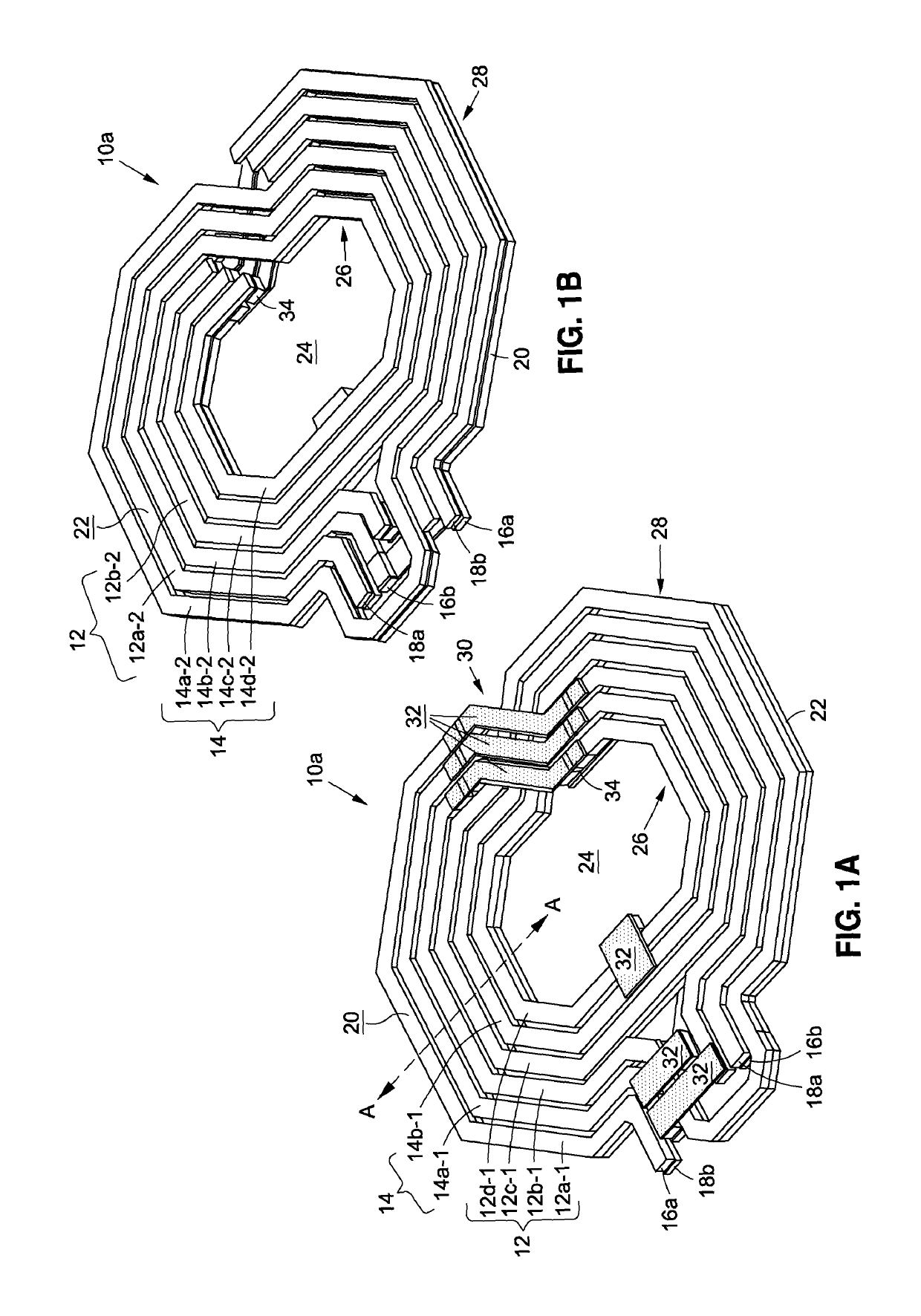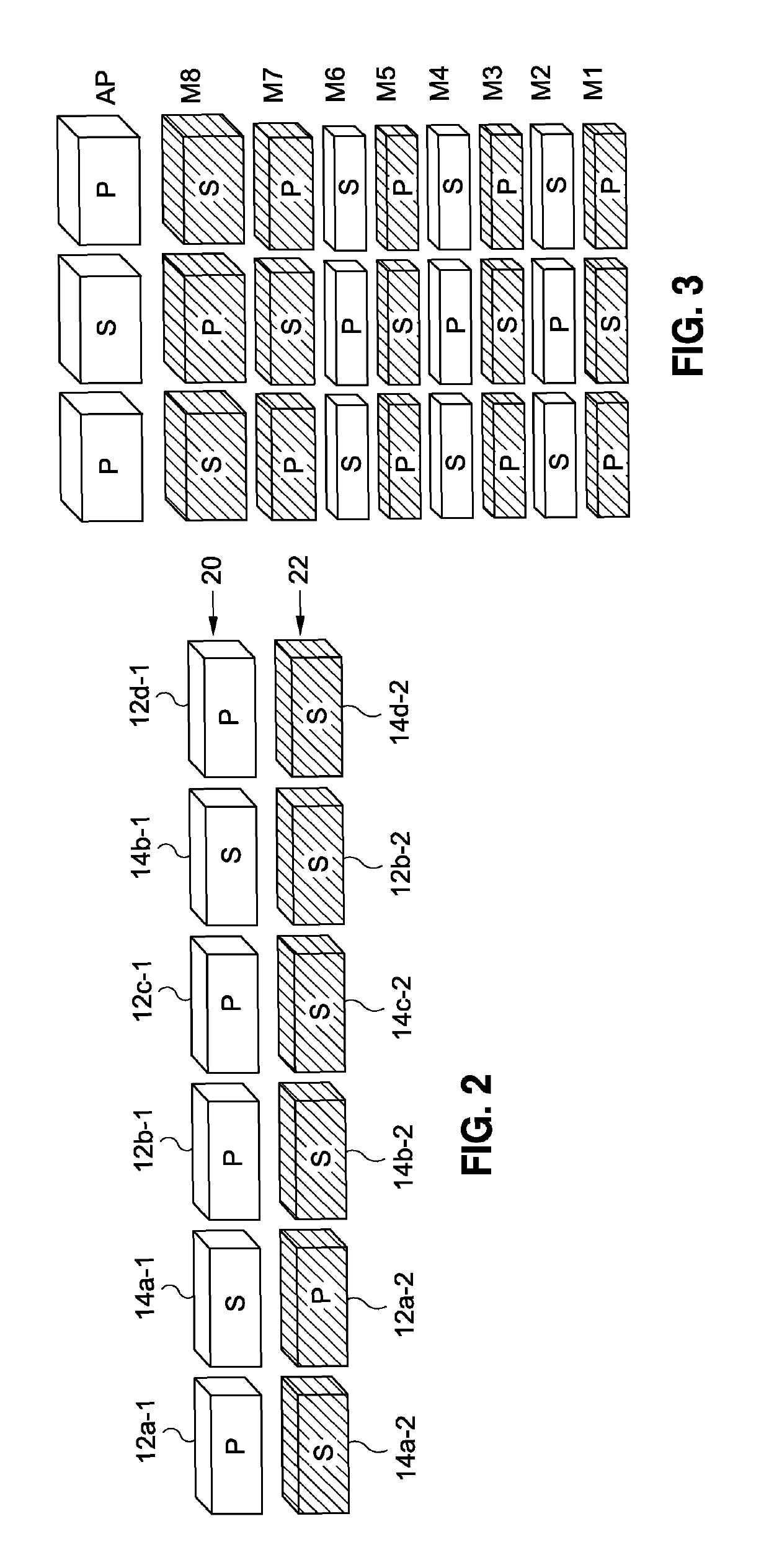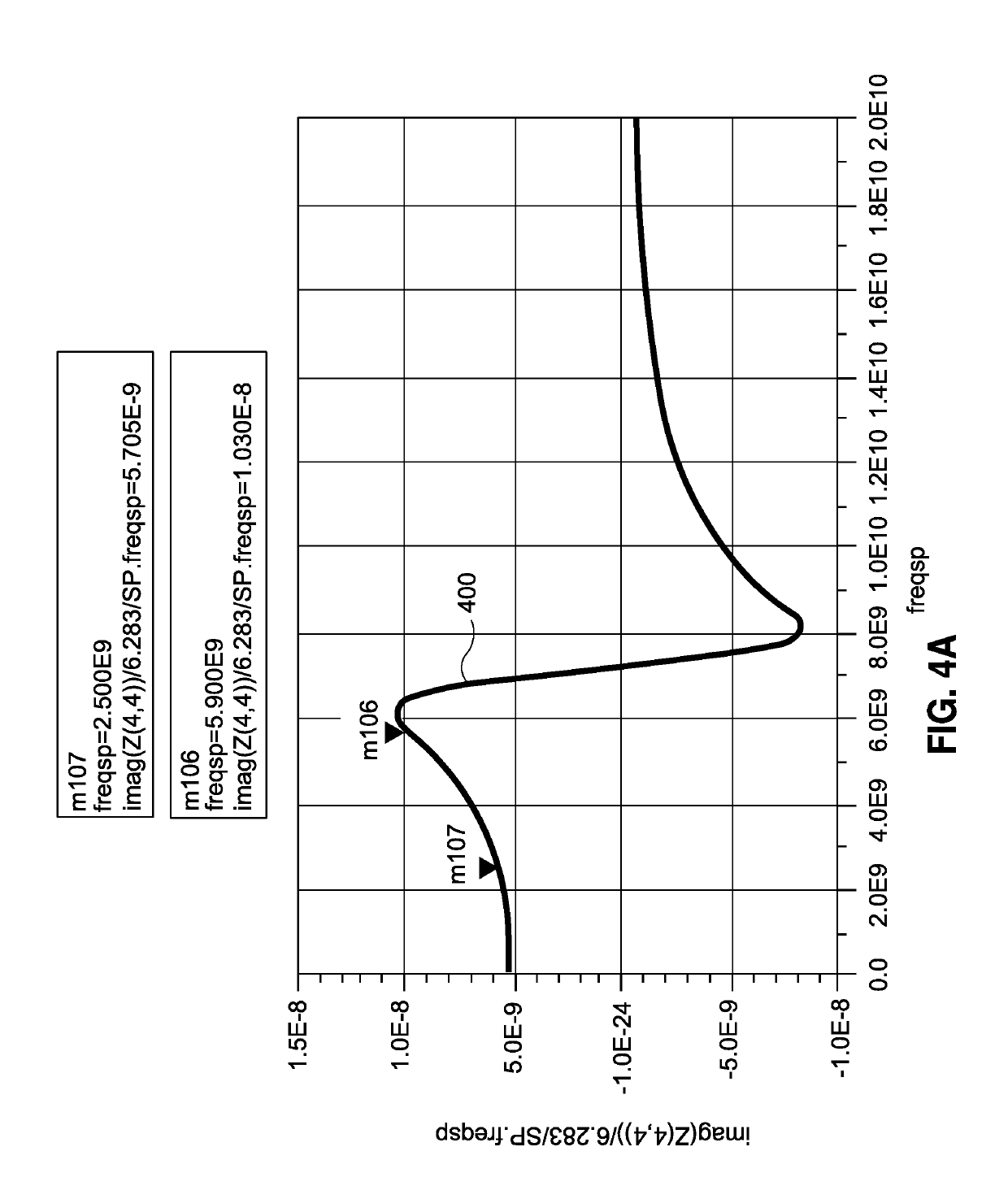Ultra-high coupling factor monolithic transformers for integrated differential radio frequency amplifiers in system-on-chip devices
a radio frequency amplifier and ultra-high coupling factor technology, applied in the direction of transformer/inductance details, fixed transformers or mutual inductances, inductances, etc., can solve the problems of increasing the noise figure of low noise amplifiers, increasing the insertion loss of baluns and transformers, and a proportionate increase in insertion loss, etc., to achieve low noise amplifiers, improve geometries and winding structures, and ultra-high coupling factor
- Summary
- Abstract
- Description
- Claims
- Application Information
AI Technical Summary
Benefits of technology
Problems solved by technology
Method used
Image
Examples
first embodiment
[0046]Referring now to FIGS. 1A and 1B, a transformer 10a includes a primary winding inductor 12 and a secondary winding inductor 14. FIG. 1A depicts a top or first side of the transformer 10a, and FIG. 1B depicts a bottom or second side of the transformer 10a. One end of the primary winding inductor 12 is a first terminal 16a, and on the opposite end of the same is a second terminal 16b. Similarly, one end of the secondary winding inductor 14 is a first terminal 18a. As shown in FIG. 1A, the primary winding inductor 12 is disposed on a first conductive layer 20, though as also shown in FIG. 1B, the primary winding inductor 12 extends to a second conductive layer 22. Moreover, as shown in FIG. 1B, the secondary winding inductor 14 is disposed on the second conductive layer 22, and extends to the first conductive layer 20 as best depicted in FIG. 1A.
[0047]Both the primary winding inductor 12 and the secondary winding inductor 14 are defined by a plurality of turns, and are routed in ...
third embodiment
[0067]With specific reference to FIGS. 11A, 12B, and 13, the parts of the primary winding inductor 12 that are on the first conductive layer 20 include a first turn 12a-1, a second turn 12b-1, a third turn 12c-1, and a fourth turn 12d-1. In embodiments utilizing conventional CMOS fabrication processes, the first conductive layer 20 is understood to be the Aluminum layer (AP). The first turn 12a-1 is the outermost portion of the spiral of the primary winding inductor 12, as well as of the overall structure of the transformer 10c.
[0068]Certain segments of the secondary winding inductor 14 are also on the first conductive layer 20. These include a first turn 14a-1, a second turn 14b-1, a third turn 14c-1, a fourth turn 14d-1, and a fifth turn 14e-1. As illustrated, the turns of the primary winding inductor 12 successively alternate with the turns of the secondary winding inductor 14 except for the fifth turn 14e-1, which is adjacent to the fourth turn 14d-1. For instance, the first tu...
fourth embodiment
[0080]With reference to FIGS. 17A and 17B, the transformer 10d likewise includes the primary winding inductor 12 and the secondary winding inductor 14. FIG. 17A depicts a top or first side of the transformer 10d, and FIG. 17B depicts a bottom or second side of the same. The other embodiments of the transformer 10 discussed above involved configurations in which the turn ratio was 1:1. Alternative turn ratios of 1:n are also contemplated; where n is less than 1, the transformer is of the step-down type, and where n is greater than 1, the transformer is of the step-up type. Impedance transformations and impedance matching is possible by utilizing such transformers or coupled inductors, and either the source or load impedance may be transformed to its optimal value to achieve maximum power transfer to a subsequent stage or to the antenna.
[0081]The primary winding inductor 12 has one end that corresponds to the first terminal 16a, and another end that corresponds to the second terminal ...
PUM
| Property | Measurement | Unit |
|---|---|---|
| inductance | aaaaa | aaaaa |
| inductance | aaaaa | aaaaa |
| inductance | aaaaa | aaaaa |
Abstract
Description
Claims
Application Information
 Login to View More
Login to View More - R&D
- Intellectual Property
- Life Sciences
- Materials
- Tech Scout
- Unparalleled Data Quality
- Higher Quality Content
- 60% Fewer Hallucinations
Browse by: Latest US Patents, China's latest patents, Technical Efficacy Thesaurus, Application Domain, Technology Topic, Popular Technical Reports.
© 2025 PatSnap. All rights reserved.Legal|Privacy policy|Modern Slavery Act Transparency Statement|Sitemap|About US| Contact US: help@patsnap.com



